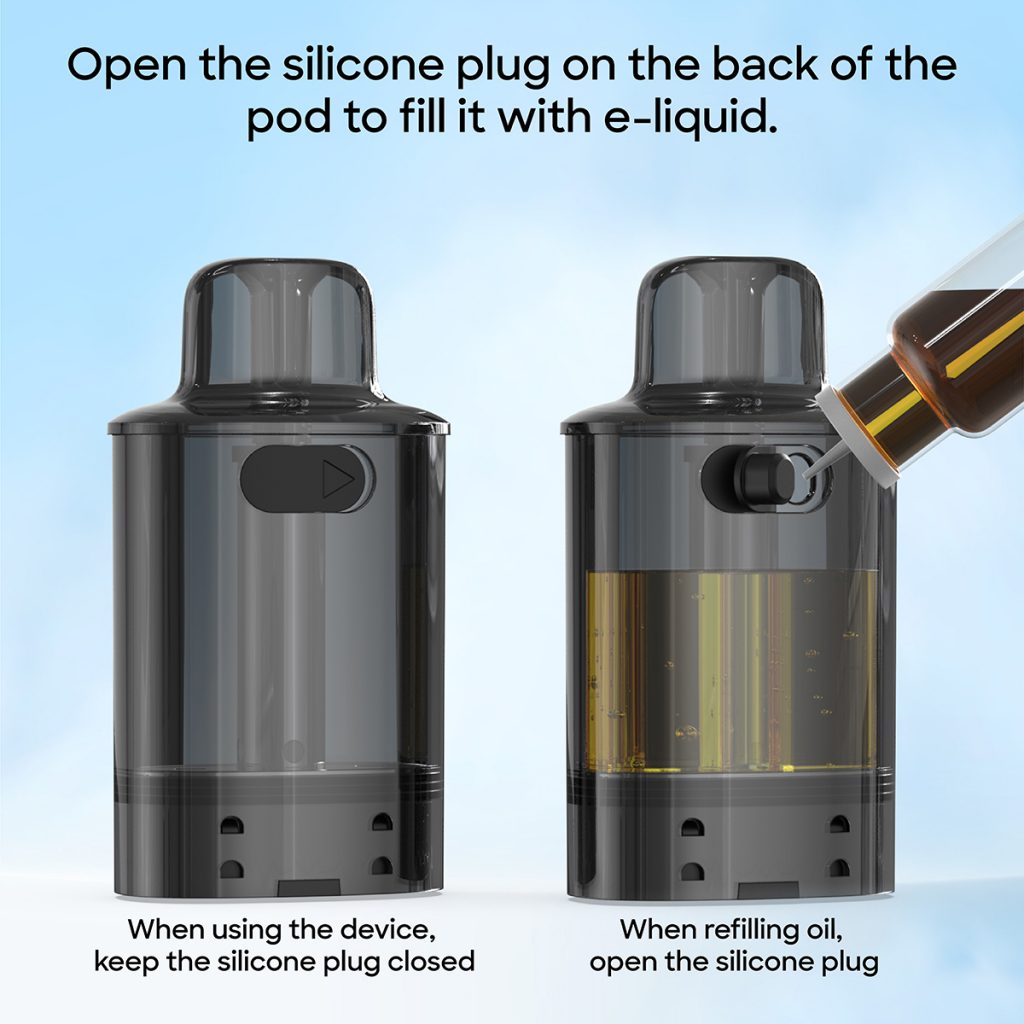The morning sky in Brussels is often tinged with a pale gray, and the lights in the European Commission building are barely lit, but already a major legislative proposal is underway that could impact the entire European market and the fate of countless users and manufacturers. On July 16, 2025, the European Commission proposed a draft amendment to the existing Tobacco Taxation Directive (TTD, also known as the Tobacco Excise Directive). This draft aims to modernize the EU-wide tax structure for tobacco and related products. It will not only raise the minimum tax rate on products like traditional cigarettes, but also include new tobacco or nicotine products like heated tobacco, e-cigarette liquids, and nicotine pouches within the minimum tax range.
The background and motivation behind this proposal stem from the dual pressures of market forces and public health. While there has been progress in reducing cigarette use within the EU, the pace is insufficient. Furthermore, in recent years, alternative or new products such as e-cigarettes, heated tobacco products (HTPs), and nicotine pouches have rapidly entered the market, leading to increased use, particularly among young people, and posing health risks and dependency issues. One of the goals of the EU’s “Beat Cancer Plan” is to reduce the proportion of tobacco users to below 5% by 2040. To achieve this goal, the existing tobacco tax framework is considered outdated and insufficient to address the challenges posed by these new products.
The core elements of the proposal include the following. First, the draft proposes a significant increase in the minimum excise tax rate on established categories, such as traditional cigarettes and loose tobacco, to narrow tax disparities between EU member states and reduce cross-border tobacco trade and tax evasion from low-tax to high-tax jurisdictions. The draft proposes a significant increase in the minimum tax rate on cigarettes from its current level, with some drafts suggesting a rise from approximately €90 per thousand cigarettes to €215. The tax rate on loose tobacco is also proposed to increase from €60 per kilogram to a similar level.

Secondly, new product categories are formally included within the scope of the minimum tax rate. New products such as heated tobacco products, e-cigarette liquids, and nicotine pouches are already taxed in some member states, but there is no unified minimum tax rate at the EU level. The proposal calls for establishing minimum tax rates for these products to prevent countries from imposing very low tax rates under the guise of “substitutes,” which could lead users to switch to these products in large numbers due to lower tax burdens. Specifically, the draft stipulates that e-liquids will be taxed at different rates based on nicotine concentration: e-liquids with a concentration above 15 mg/ml are proposed to be taxed at approximately €0.36 per ml, while e-liquids with a concentration below or equal to 15 mg are proposed to be taxed at approximately €0.12 per ml.
Nicotine pouches will also see a unified tax rate. The proposal suggests a minimum tax per kilogram of nicotine pouches, with the draft suggesting a figure of €143 per kilogram.
For heated tobacco products (hot tobacco sticks or heated tobacco devices), a minimum tax based on unit or weight is proposed. For example, one proposal would set a minimum tax of €108 per thousand heated tobacco sticks, or approximately €155 per kilogram. This tax burden is slightly lower than that of e-liquids, but significantly closer to the tax rate for traditional cigarettes, mitigating the problem of substitution consumption caused by tax differences.
The proposal also includes a new hybrid tax structure: based not only on a fixed euro amount but also taking into account differences in purchasing power (purchasing power index/price level index) between member states, and adjusting for inflation and economic growth every few years. This way, the tax burden is considered both in absolute terms and with relative fairness.
If adopted by Parliament and the Council and ultimately becomes law, this draft amendment is expected to take effect on January 1, 2028, with a transition period to allow member states to adjust their tax systems and market regulatory mechanisms.
As this news/policy draft emerged, public opinion was already mingling. Public health expert groups expressed strong support for the proposal. They believe that including products such as e-cigarette liquids and nicotine pouches in a unified minimum tax rate is a key step in closing the current legal gap. Many member states currently tax these products in widely varying ways, with some offering virtually no tax and others offering high but unstable tax rates. A unified minimum tax rate would help reduce the accessibility of these products to young people and prevent the abuse of the substitution effect that can occur when e-cigarettes or heated tobacco are substituted for traditional cigarettes. Higher taxes increase prices, reducing product affordability, and are particularly detrimental to low-income young people—a crucial way to reduce new user adoption and prevent dependency.
On the economic and fiscal front, the European Commission’s proposal projects that such a large-scale tax increase and expansion will generate billions of euros in additional tax revenue annually. For example, reports estimate that the new minimum tax rate and expanded product coverage could increase tax revenue by approximately 15-20 billion euros across the EU, reducing public health spending and supporting member state budgets.

On the market and industry front, there are significant concerns and opposition. Some member states (particularly those with a significant tobacco industry presence or agricultural base, such as Italy, Greece, and Romania) object to aligning tax rates too closely with those for products considered “less harmful alternatives,” such as heated tobacco, and traditional cigarettes. They point out that excessive tax burdens could encourage consumers to return to traditional cigarettes or black market products and could also stifle the market development of legal alternatives, such as e-cigarettes and nicotine pouches, designed to help people quit smoking or reduce harm. These countries and manufacturers prefer to maintain some tax rate differentials to reward products that are technologically less risky or do not involve burning tobacco.
At this critical juncture of policy change, we can use the specific brand “VEEHOO” as a case study to explore its advantages and potential challenges under a unified minimum tax system, as well as how to adjust its strategy.
Let’s assume that VEEHOO is an e-cigarette brand that already operates legally in certain EU countries. Its product line includes a variety of e-cigarette devices, including disposable e-cigarettes and rechargeable, replaceable cartridge-based e-cigarettes, as well as e-liquids with varying concentrations, ranging from low concentrations (e.g., 3-5 mg/ml) to medium concentrations (15 mg/ml) and even slightly higher (where permitted by regulations). VEEHOO’s products are designed with quality and safety in mind. The e-liquids used undergo rigorous ingredient testing, are clearly labeled with nicotine content and other excipients, and are packaged in a compliant manner. Their marketing emphasizes that e-cigarettes are not harmless, but rather offer a potentially less harmful alternative to traditional tobacco smoking.
VEEHOO’s strengths lie in its brand reputation and product quality, which may make it more resilient to the challenges posed by rising taxes under a unified tax rate. If its user base prioritizes product quality and safety, they will be more easily persuaded to continue using its products after price increases, rather than immediately switching to black market or lower-quality alternatives. Veehoo may also proactively adjust its product line strategy, such as focusing on low-concentration e-liquid products, designing smaller cartridges/e-liquid packaging to reduce consumers’ one-time expenses, or launching products that comply with tax differences (below the concentration threshold) to mitigate the cost increases caused by tax rates. If Veehoo already has a strong supply chain and compliance system, it may also have a first-mover advantage in standard setting, labeling, and safety certification.
In favorable policy areas, not only will public health goals be achieved, but market regulation will also be strengthened. Brands like Veehoo may actually enjoy more stable development opportunities in a regulated environment. One of the concerns consumers have about e-cigarette products is unclear product quality and content labeling, as well as inadequate safety. If regulations are improved, tax rates are unified, and enforcement is strict, compliant brands may gain greater market trust and leverage this to collaborate with regulators and public health agencies, potentially securing official or semi-official support (for example, through roles in smoking cessation programs).

Of course, challenges should not be underestimated. For Veehoo, rising taxes mean higher costs. Pricing for products with higher nicotine content, as well as packaging and distribution, may have to be increased to maintain profit margins. This could lead to lower sales in a highly competitive market where consumers are price-sensitive. High taxes could make legal products less competitive, especially when consumers have easy access to cheaper alternatives or smuggled products. For high-concentration e-liquid products (over 15mg/ml), which are subject to higher taxes (e.g., ≥ €0.36 per ml), heavy users or those switching from cigarettes may find the price increase difficult to bear.
Furthermore, while the bill establishes a minimum tax rate, countries can still set higher rates, resulting in significant price differences between member states. This could encourage cross-border purchases, “buying tourism” of tobacco or e-cigarette products, and gray trade. Regulatory enforcement, tax collection, testing of e-liquids and other products, and classification standards must be clearly defined to prevent industry players from exploiting unclear or confusing characteristics such as concentration and packaging to circumvent taxes.
Furthermore, if VEEHOO wants to maintain the competitiveness of its low-concentration e-liquid products and maintain lower tax rates, it must strictly control the concentration, formulation, and labeling of its products. This could limit choices for some consumers or stimulate demand for more complex product innovation.
There are also many key steps in the passage and implementation of legislation. After the European Commission’s proposal, it must be approved by the European Parliament and the Council of the European Union (representatives of member state governments). Negotiations will also be held with member states on key terms such as tax rates, transition periods, product definitions, and concentration standards. Differences in economic status, public health conditions, and political will among member states will influence the final version. For example, low-income countries or those that previously taxed e-cigarettes less heavily may oppose excessively high tax rates, while countries with greater public health pressures may push for stricter and higher standards. The implementation and enforcement of the law also need to consider the regulatory capacity of customs and tax authorities, the issue of smuggling and the black market, and supporting policies such as consumer education and alternative support (such as smoking cessation services).
In the long run, if the draft or revised directive can balance public health with the interests of industry and consumers, the EU is likely to take a step closer to a “smoke-free or reduced-smoking society.” In this context, brands like VEEHOO that proactively adjust their strategies, enhance product transparency and safety, optimize their product mix, and actively participate in standard-setting within member states’ policies and legal frameworks may not only survive but also earn the trust of consumers who increasingly demand quality and compliance.
If the proposal fails to maintain moderation or consider the harm reduction role of alternative products, it could also pose another risk: legal users returning to traditional cigarettes or switching to more dangerous or less reliable products. Meanwhile, legitimate companies in the industry could suffer significant costs and market share losses.
In summary, the EU’s new tobacco tax reform proposal represents a critical juncture in recent tobacco and nicotine policy. It embodies the advancement of public health goals, the modernization of market regulation, and the improvement of the tax system and fairness. For e-cigarette brands like VEEHOO, this presents both a challenge and an opportunity. If they can properly adapt to regulatory changes and prepare for product lines, pricing, brand positioning, and compliance, they may secure a more stable and sustainable position in the new environment. However, if they ignore regulations, consumer burdens, and market differences, they risk marginalization.
Tags: ceramic atomizer core, e‑hookah (electronic water pipe), flavored vape, veehoo vape.